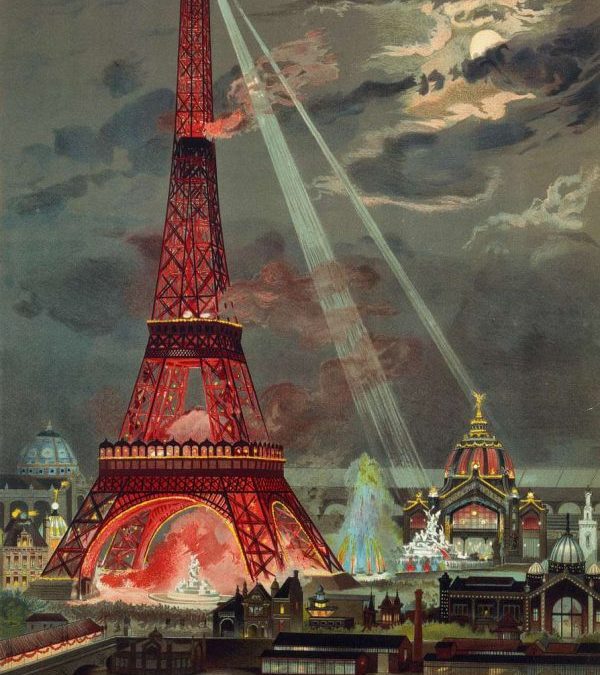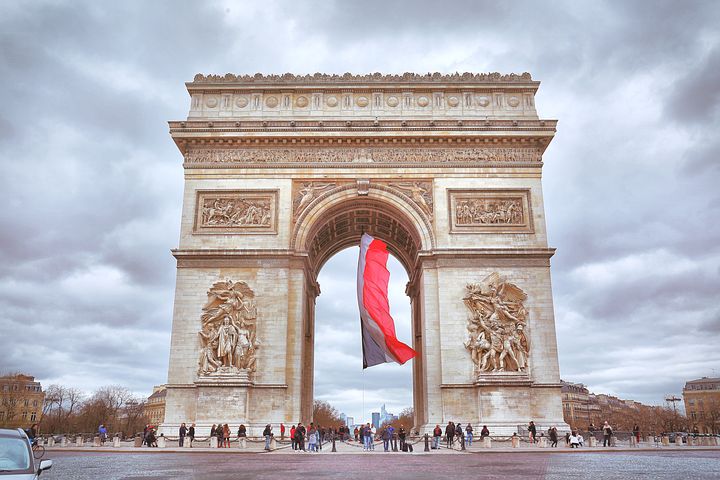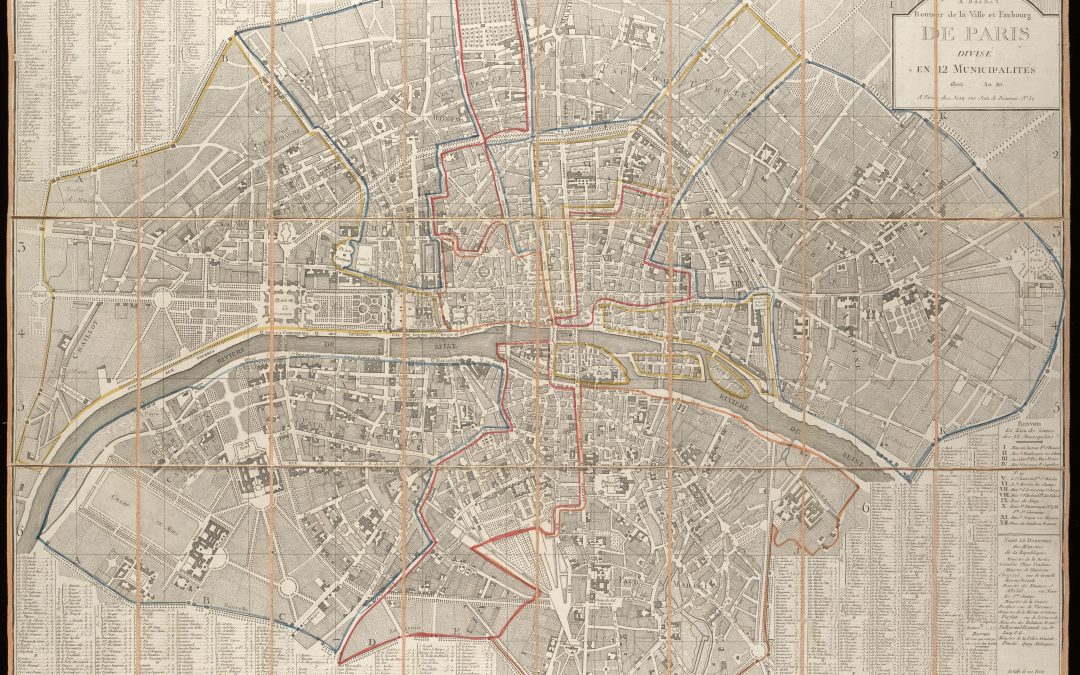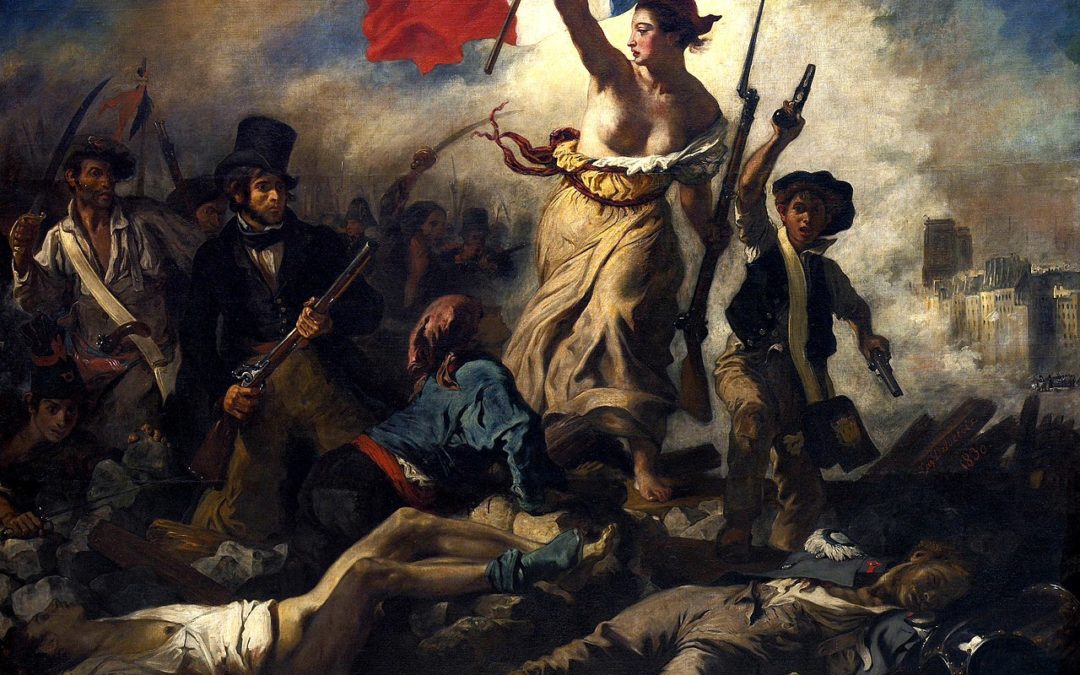
Eiffel Tower (Tour Eiffel)
What image is conjured in your mind when you hear, Paris? The Eiffel Tower, of course! It must be the symbol that is most closely associated with a city, and it has to be the most recognizable structure on the planet. Even in photographs and drawings, it is stunning, but in person, it is heart stopping. It is doubtful that anyone could tire of seeing the Eiffel Tower, even if it were straight outside your living room window and you had to look at it every day!
Its history began in the 1800s when Paris decided to host a world’s fair named, Exposition Universelle de 1889. The year 1889 was chosen because it marked the 100th anniversary of the storming of the Bastille and the beginning of the French Revolution. A world’s fair at the time was primarily for countries to show off their industrial achievements and their culture. But, with so many visitors, they had to have food, souvenirs and even entertainment – like Buffalo Bill and Annie Oakley performing his “Wild West Show,” yes, right there on the Champ de Mars.
When the exposition was in its planning stage, according to the official website, a competition was held to “study the possibility of erecting an iron tower on the Champ-de-Mars with a square base, 125 metres across and 300 metres tall”. Out of 107 entries, the chosen submission came from “Gustave Eiffel, an entrepreneur, Maurice Koechlin and Emile Nouguier, both engineers, and Stephen Sauvestre, an architect.”
Controversy is Its Name
Like any project, it was controversial at the time. But, the Gustave Eiffel pushed ahead and it was completed on March 31, 1889. It was the tallest structure made by man in the world. Visitors must have been in a state of awe as they entered the Exposition Universelle de 1889 through the wrought iron arches of the Eiffel Tower. Soon, the controversy died down and its popularity was unsurpassed. The Eiffel Tower boasted nearly 2 million visitors in 1889, alone. Now, the Eiffel Tower has nearly 7,000,000 visitors each year, and claims that nearly 300 million people have visited it since its opening.
Many of these visitors have the opportunity to view it as they ascend and descend, but also from afar while in other parts of Paris. From many places, you can catch a glimpse of it jutting into the sky. At anytime, day or night, the Eiffel Tower is extraordinary. During the day, clouds seem to float just above the top. And in the darkness, it has an otherworldly glow from the soft illumination along the iron work. At the top of every hour after sunset, twinkling lights dance along the structure making the entire Eiffel Tower sparkle with diamonds in the night sky.
Visiting The Eiffel Tower
If you go for a visit, the first level above the ground has a transparent floor. You may gasp when you take your first steps out into the open. Before you look down, grab the arm of whoever is near to you for a little steady support. After you enjoy seeming to walk on air, find the elevator for the second level, and move on up.
On the second level, walk the perimeter for more extraordinary views. That doesn’t sound like much, but there are only so many ways to describe how great the views are. The farther up you go, the farther away you can see. As you make your way to the top, notice how the perspective changes – it is fascinating. Enjoy your time, have a snack or something to drink if you like, or, reserve a spot for lunch find a souvenir, then find the elevators to ascend to the top level.
Squeeze in and catch your breath as the elevator moves higher and higher through the wrought iron. As the door opens, look out from the top of the Eiffel Tower! Safely make your way around in the caged walkway to see the world at your feet. Chilly winds can blow at this height, so come prepared. Back inside you can see Gustave Eiffel’s office and the gramophone that was given to him by Thomas Edison. After your trek to the top are you hankering for a glass of bubbly? Then toast your visit at the Champagne Bar.
After you have enjoyed your time at the summit, find the down elevators and begin your descent back to earth.
Buy Your Tickets in Advance!
If you are sure you want to go to the top of the Eiffel Tower, buying your ticket in advance may set your schedule for the entire trip. Plan ahead – way ahead, like a month or more before you go – to buy your ticket. Unless you are unbelievably fortunate, if you do not have an advance ticket, you will spend one entire day trying to go up the Eiffel Tower. If you do not have an advance ticket, and you want to spend your day in line, make sure you get in the right line! My friends, Jennifer and Jamie, and I got in line to go up, and when we bought our tickets – IT WAS FOR THE STAIRS to the first level!!!!! No way were we getting in line again, so we hoofed it to the first level!
My parents were some of the unbelievably fortunate. We took an afternoon river trip on a glass-topped boat leaving from the quai by the Eiffel Tower. On the excursion, the heavens opened up. Rain poured for nearly the whole journey back from the Seine turn around. But, when we got off the boat and walked to street level, no one was in line to buy tickets to go to the top of the Eiffel Tower. I had no idea my mother would want to go to the top, but she did. I had never been up before, so we bought tickets, made our way to the top and had crystal clear visibility from the downpour and hardly any other visitors. Do not expect this bit of luck – buy your tickets in advance!
Spend the Afternoon and Enjoy Lunch
The official site states, “In 1889, four majestic wooden pavilions designed by Stephen Sauvestre occupied the first floor platform. Each restaurant could seat up to 500 guests.” Maybe not such expansive establishments now, but dining options are available on the street level, first level and second level. Make a reservation at one of the restaurants to enjoy a meal at a table and chairs. Or, send one of your party to the take out kiosk and enjoy a sandwich or hot chocolate standing in line. Do not be worried that that you will go hungry while seeing the Eiffel Tower, plenty of options are available.
Update – The Eiffel Tower has welcomed more than 300 MILLION visitors!!! That is correct – 300 MILLION.
The Eiffel Tower
What makes it special: Iconic symbol of Paris from the Exposition Universelle of 1889.
Nearest Métro: Bir-Hakeim – about a half mile walk to the Eiffel Tower
Nearest RER: Champ de Mars-Tour Eiffel – a little less than a half mile walk to the Eiffel Tower
Arrondissement: 7th
Official website: https://www.toureiffel.paris/en
Open every day. Hours depend on season
Need detailed regulations? Here is the official pdf.



